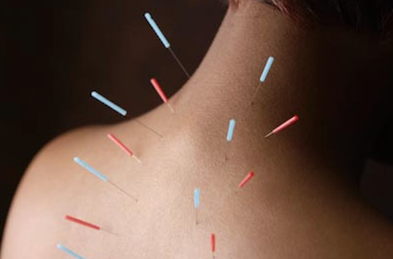Learning about Acupuncture Body Points
An ancient remedy still at work today. In today’s world of alternative medicine and holistic healing, acupuncture (the therapeutic use of needles to stimulate an array of acupuncture body points) has found a new acceptance despite, or perhaps because of, the prevalence of modern medicine’s tendency to throw medication at any and all ailments. One of the greatest appeals of acupuncture is the fact that it does not require the use of any medications. Instead of relying on external chemistry to heal the body, acupuncturists tap many acupuncture body points to manipulate the energy within in order to restore balance. Over some three thousand years, a standard set of points on the body have been identified and characterized (these are even recognized by the World Health Organization) for treatment.
The Meridians
Acupuncture body points are segregated into groups, known as meridians. These twelve main and eight extra meridians are located on various points of the body known as “ashi.” Of the twelve main groupings of acupuncture body points, ten are named after bodily organs (and are capitalized to prevent confusion with the organs themselves), while the remaining two main meridians are named for bodily functions (the Pericardium and San Jiao). Only two of the extra meridians have acupuncture body points of their own (the others are manipulated by multiple acupuncture body points in the main meridians). These two extra meridians are located on the mid-line of the front of the head and trunk, while the twelve main meridians run along bilateral symmetrical lines vertically through the body. Furthermore, each of the twelve main meridians is classified as belonging either to the yin channel or the yang channel, resulting in six of each. On either side of the body, these channels are split between three that belong to the hand and three to the foot.
The yin channels of the hand include those for the Lung, the Pericardium, and the Heart. These begin on the chest and follow the inner arm (mostly along the front) until they reach the hand.
The yang channels of the hand include those for the Large Intestine, the San Jiao, and the Small Intestine, which begin on the hand and follow the outer surface of the arm (mostly along the back) until they reach the head.
The yin channels of the foot include those for the Spleen, the Liver, and the Kidney. These begin on the foot and follow the inner surface (mostly along the back) of the leg until they reach the chest or flank.
The yang channels of the foot include those for the Stomach, the Gallbladder, and the Bladder, which begin on the face, near the eye, and follow the body on the surface (mostly along the front and side) of the leg until they reach the foot.
Treatment
It is believed that ailments of the body, including pain and illness, are caused by surpluses or deficiencies of qi, or “vital energy,” in the affected part of the body. When a patient comes to an acupuncturist, he or she will examine the patient (the trunk and stomach are often used extensively for diagnoses) and ask them a number of questions to determine the nature of their problem. Once the problem is identified, the acupuncturist can begin working to alleviate the pain by using needles to stimulate the acupuncture body points as a means to normalize the free flow of qi through the body.

No Comments